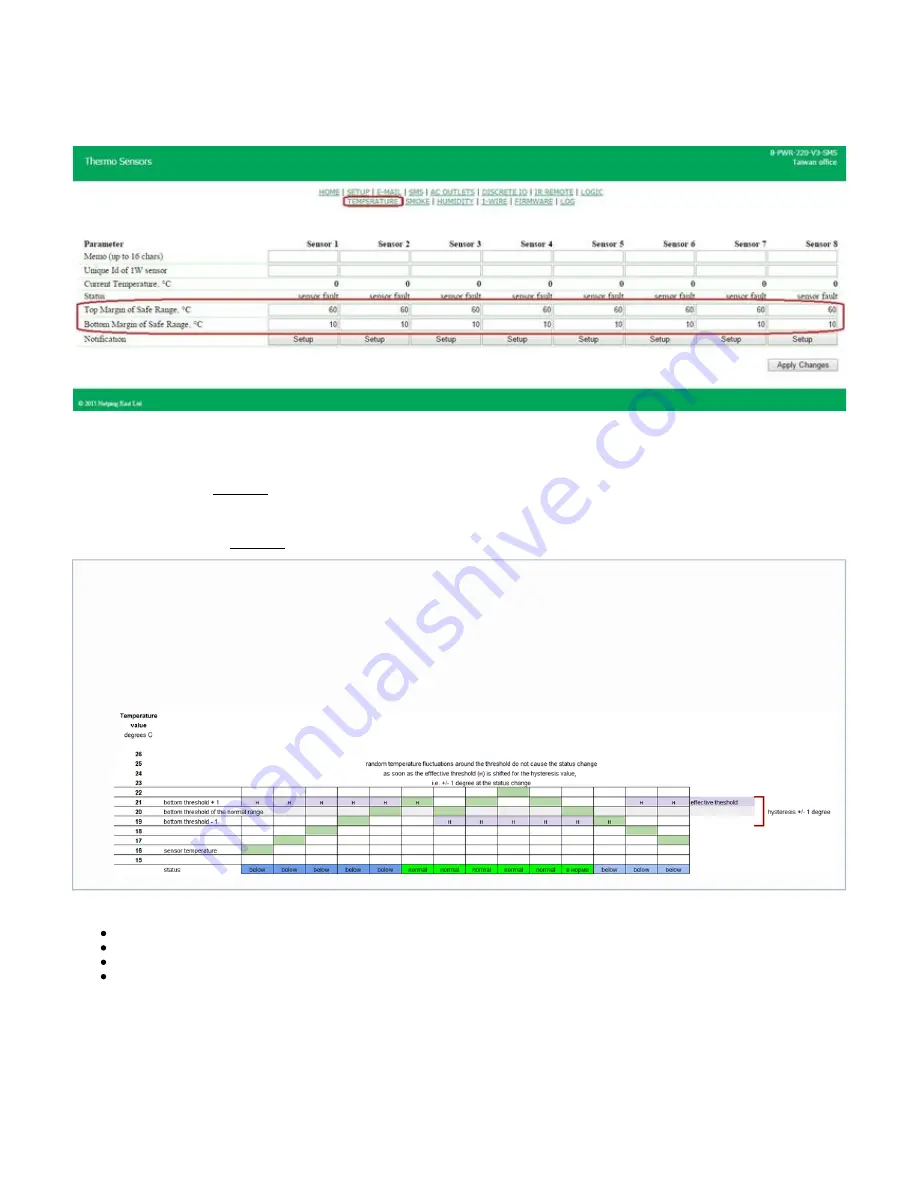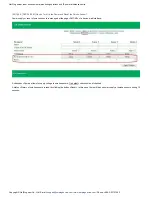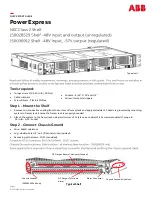
NetPing server room environmental monitoring solutions and IP power distribution units.
Copyright © NetPing east Co., Ltd / E-mail:
/ Phone: +886-2-23121582
[email protected] www.netpingdevice.com
[ENG] 4.5 [DKSF 48.5 IU] Setting Up and Top and the Bottom Margins of the Norm for Temperature Sensors
To configure a top and bottom margin of a safe range for a temperature sensor, there is a need to go to the page «
» of a device
TEMPERATURE
web interface:
where:
Top Margin of Safe Range, °C – is a field for setting a top margin of a temperature range for each temperature sensor. A temperature range is
used to specify conditions for generating SNMP TRAP and Syslog notifications as well as e-mail and SMS notifications (in a device with an
embedded GSM modem).
: 60
On default
Bottom Margin of Safe Range, °C – is a field for setting a bottom margin of a temperature range for each temperature sensor. A temperature
range is used to specify conditions for generating SNMP TRAP and Syslog notifications as well as e-mail and SMS notifications (in devices with
an embedded GSM modem).
: 10
On default
Status – displays a current status of a temperature sensor. Its possible values are:
Failure – a temperature sensor is not connected or does not respond;
Normal – a temperature sensor responds and a temperature value is within the margins of a specified range for this temperature sensor;
Above normal - a temperature sensor responds, and a temperature value is above a specified range for this temperature sensor;
Below normal - a temperature sensor responds, and a temperature value is below a specified range for this temperature sensor
After changing the settings, there is a need to save the parameters by clicking the button «
».
Apply changes
To prevent frequent triggering of a top and bottom margins, a switching hysteresis of
.
1°C is used
A hysteresis sets a «corridor» around a specified temperature, within the limits of which top and bottom margins of a safe range do not
respond to temperature oscillations. This feature allows to avoid frequent random notifications from a temperature sensor caused by
natural spontaneous oscillations of a temperature measured by a sensor. If a current status of a temperature sensor is «above normal»,
then a threshold for switching a status is a specified temperature minus a hysteresis value. And vice versa, if the current status is
«below normal», then a threshold for switching is a specified temperature plus a hysteresis value. As soon as a temperature increases
or decreases reaching a threshold value (taking a hysteresis into account), thus leaving margins of a «corridor», a temperature status is
changed. Operation logic of hysteresis is explained in the picture below.











































